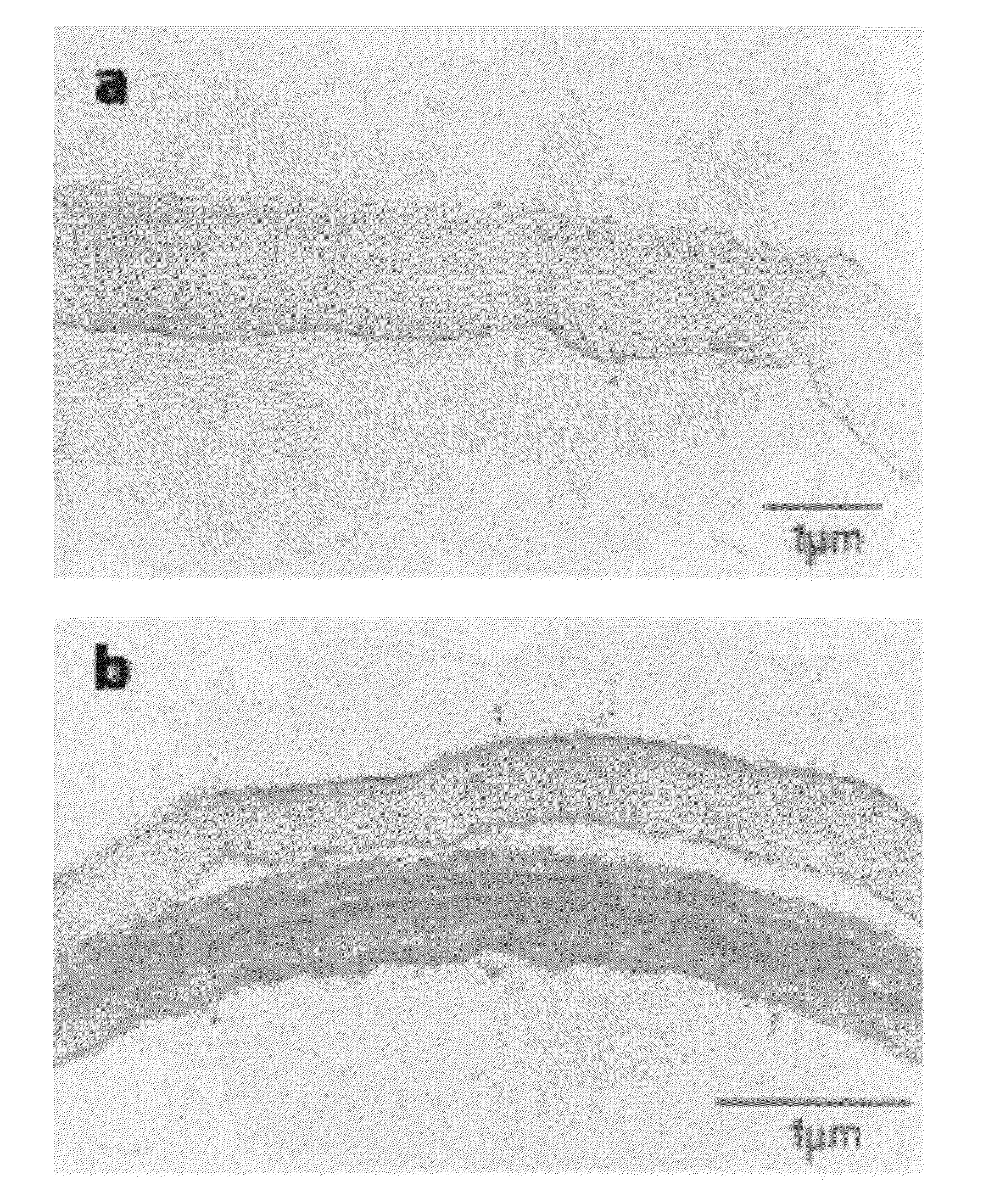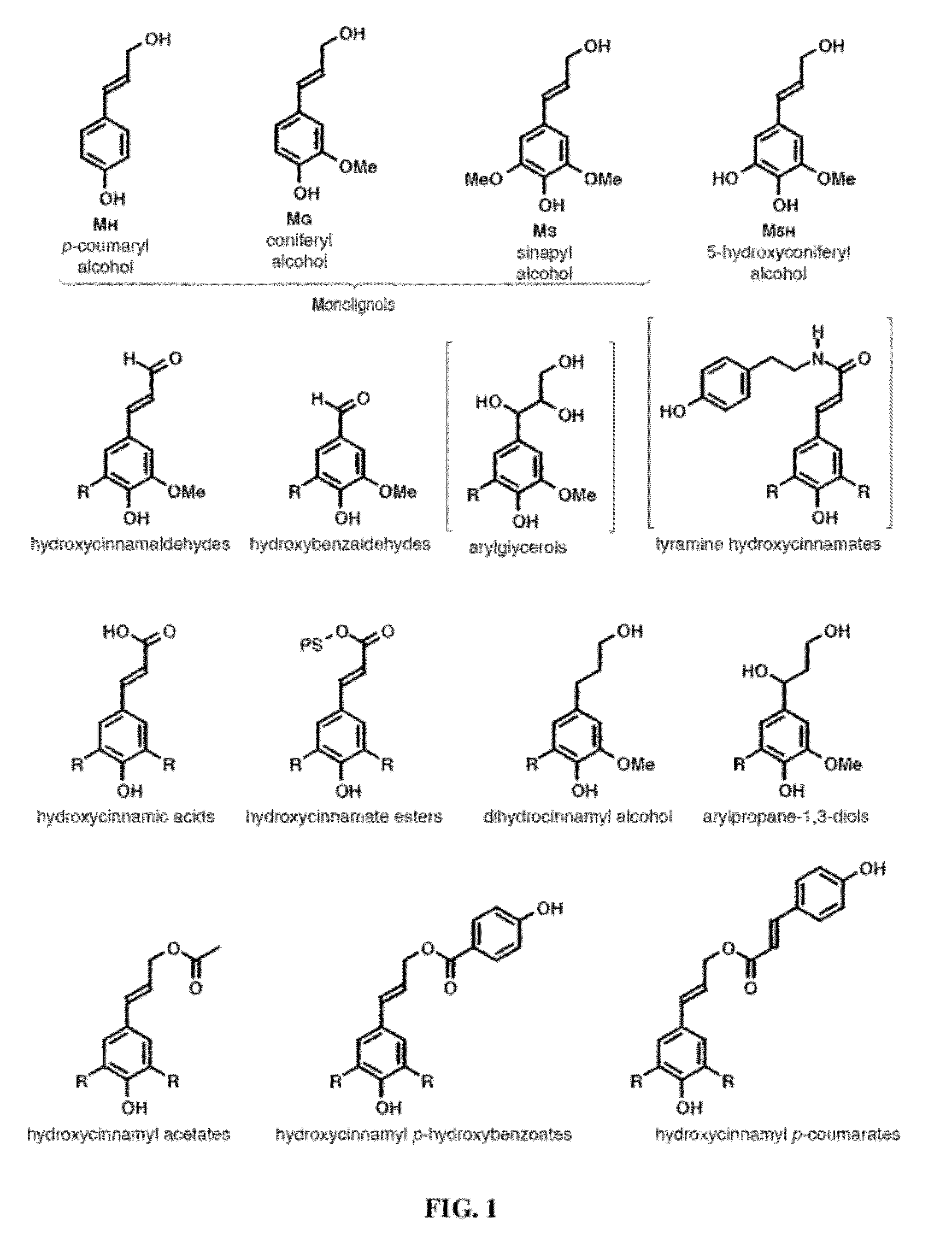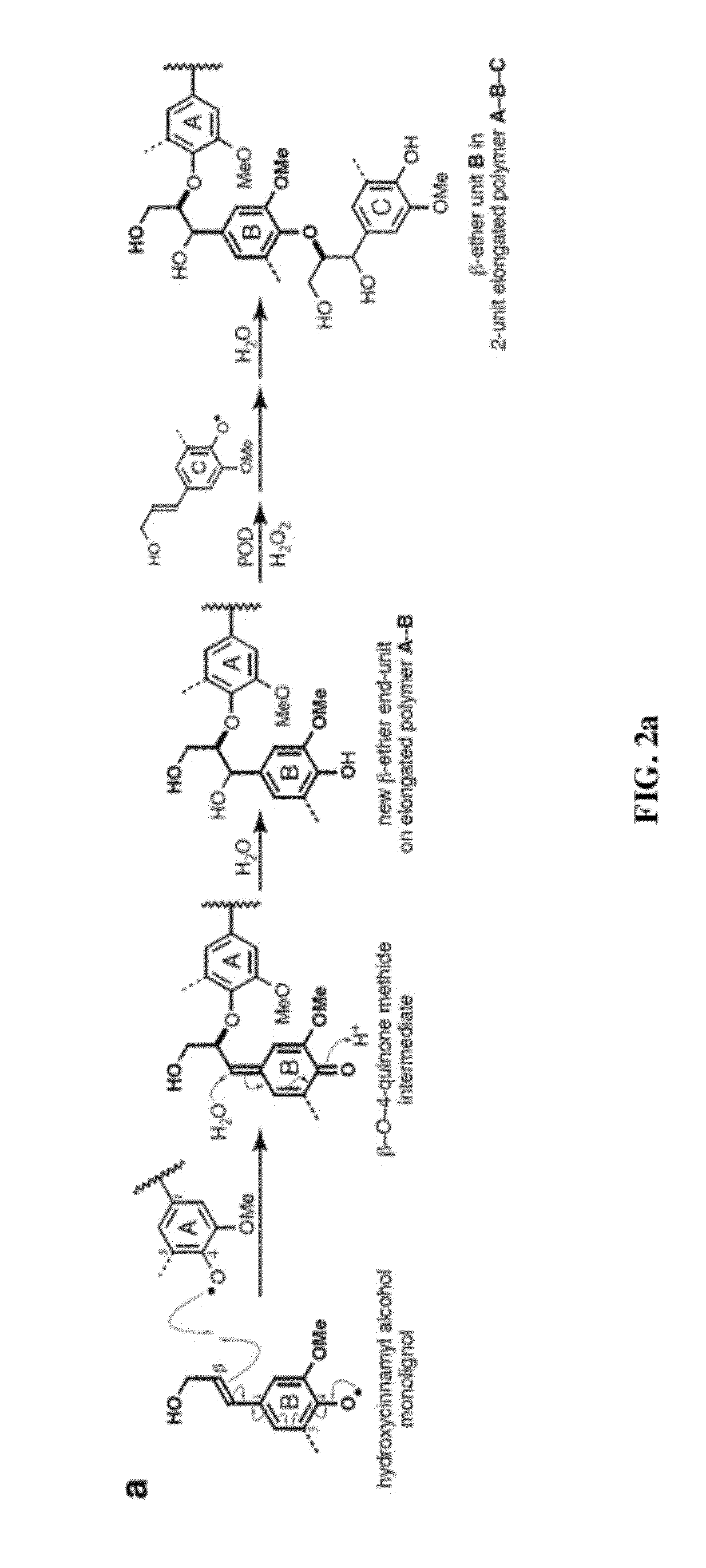Incorporation of Flavan-3-ols and Gallic Acid Derivatives into Lignin to Improve Biomass Utilization
a technology of flavan-3-ols and gallic acid derivatives, which is applied in the direction of lignin derivatives, organic chemistry, microorganisms, etc., can solve the problems of limiting the ability of ruminants to utilize otherwise digestible, p-hydroxyphenyl moieties do less well, and cost prohibitive for feedstuffs
- Summary
- Abstract
- Description
- Claims
- Application Information
AI Technical Summary
Benefits of technology
Problems solved by technology
Method used
Image
Examples
examples
[0068]The following Examples are included solely to provide a more complete disclose of the invention disclosed and claimed herein. The Examples do not limit the scope of the claimed invention in any fashion.
[0069]As noted above, recent discoveries highlighting the metabolic pliability of plant lignification indicate that lignin can be engineered to dramatically alter its composition. Perturbing single or multiple genes in the monolignol pathway of angiosperms can lead to dramatic shifts in the proportions of normal monolignols (e.g., coniferyl 1 and sinapyl alcohol 2) and pathway intermediates polymerized into lignin [1, 2]. The malleability of lignification is further illustrated in some angiosperms by the pre-acylation of monolignols with acetate, p-hydroxybenzoate, or p-coumarate [1, 36] and the oxidative coupling of ferulate and diferulate xylan esters into lignin [9, 37, 38].
[0070]Recent efforts in lignin bioengineering are primarily aimed at manipulating the normal monolignol...
PUM
| Property | Measurement | Unit |
|---|---|---|
| pH | aaaaa | aaaaa |
| dry weight | aaaaa | aaaaa |
| solubility | aaaaa | aaaaa |
Abstract
Description
Claims
Application Information
 Login to View More
Login to View More - R&D
- Intellectual Property
- Life Sciences
- Materials
- Tech Scout
- Unparalleled Data Quality
- Higher Quality Content
- 60% Fewer Hallucinations
Browse by: Latest US Patents, China's latest patents, Technical Efficacy Thesaurus, Application Domain, Technology Topic, Popular Technical Reports.
© 2025 PatSnap. All rights reserved.Legal|Privacy policy|Modern Slavery Act Transparency Statement|Sitemap|About US| Contact US: help@patsnap.com



